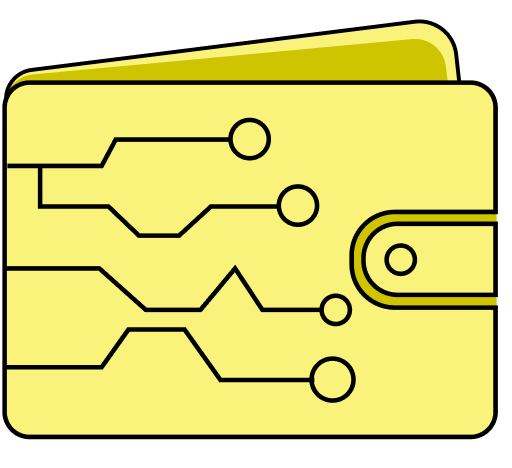MyCrypto is an open-source and cost-free interface designed to simplify the handling of users’ Ethereum wallets and interaction on the Ethereum network. MyCrypto was created as an easy-to-use alternative to more complex crypto solutions. It makes wallet handling easy without compromising control or security.
Initially created as a MyEtherWallet fork, MyCrypto is now an independent site. It supports numerous various tokens on the Ethereum network, supports several hardware wallets, and offers features to facilitate making transactions, interacting with decentralized applications (dApps), and managing private keys.
Let’s break down why MyCrypto is unique, how it works, and where it fits within the world of Ethereum and beyond.
Origin and Evolution
MyCrypto started off early 2018 as a spin-off from MyEtherWallet (MEW). Due to internal strife among the founders of MEW, Taylor Monahan created MyCrypto as an alternative path with better support, updated interface, and an open development cycle.
Monahan was one of the core team members at MEW and brought much of that know-how over to MyCrypto. Right from the start, the goal was to make wallet handling on Ethereum easy and accessible to both beginners and advanced users. MyCrypto began life with a more streamlined interface and focus on transparency, opening code and empowering users to control their keys.
Since then, the site has made ongoing improvements by adding features, usability, and sticking to open-source development. The MyCrypto team also collaborated with other wallet vendors and projects within the network of Ethereum.
Primary Features and Functionality
MyCrypto offers users several tools and functionalities to interact and deal with Ethereum accounts and the blockchain. Some of the primary functionalities include direct sending and receiving of ETH and ERC-20 tokens from the interface. Users can create wallets, access them through several means, and securely deal with their money.
The platform supports:
-
Wallet creation and import (via mnemonic phrase, keystore file, or private key)
-
Integration with hardware wallets including Trezor and Ledger
-
Custom Token Support and Token Management
-
Transaction fee optimization gas settings
-
ENS (Ethereum Name Service) support
-
dApp interaction via Web3
All operations are done locally on the browser. MyCrypto does not hold user info or private keys on their servers, giving users full control and responsibility over their funds.
Security and Privacy
Security is among the foundational principles of MyCrypto. Unlike exchange-based accounts or custodial wallets, MyCrypto makes the user responsible for their keys. MyCrypto’s “own your keys” philosophy is double-edged; it allows more freedom but also more responsibility.
For greater security, MyCrypto:
-
Encourages the use of hardware wallets
-
Issues warnings and advice when wallet access and signing of transactions
-
Offers offline signing of transactions for extra security
-
Does not collect personal information
It also alerts users to phishing attacks and spoof websites. MyCrypto runs its own open-source phishing detection tool and includes a security-focused section of its website to avoid users falling into pitfalls.
Supported Wallets and Integrations
MyCrypto supports multiple wallet access modes to meet users’ requirements and skills. The most safe are the hardware wallets, i.e., Ledger Nano S/X and Trezor One/Model T. They are physical hardware that allows users to sign transactions without ever having private keys on the internet.
Other approaches supported are:
-
Mnemonic strings (BIP39)
-
Private keys (not recommended to use on a day-to-day basis)
-
Keystore/JSON files
Users can also integrate their wallets using MetaMask or browser extensions of Web3. This allows direct interaction between decentralized applications and MyCrypto, and thus acts as a bridge between secure wallet handling and the larger Ethereum environment.
Desktop Application
Even though MyCrypto is best known as a browser application, it does exist as a desktop application as well. The desktop application duplicates most of the browser experience but is executed entirely offline. This is appealing to those who prefer air-gapped security or would like to create and sign transactions on a system that never goes onto the web.
Its desktop version includes the following tools:
-
Offline transaction creation and signing
-
Wallet management
-
Token transmission and receipt
-
History of transactions
By dividing the offline and online processes, the application gives additional protection to those working with high quantities of crypto or concerned about browser-based attacks.
Use Within the Ethereum Community
MyCrypto is well-respected within the Ethereum community. It may not get as much publicity as newer wallets or flashy phone apps, but it sits as no-frills, no-nonsense among users of cryptocurrencies.
It is widely used by developers, power users, and those who wish to have an alternative when other wallets are not accessible. Its transparent approach and support of Ethereum standards make it an established tool, especially when dealing with lesser-known ERC-20 tokens or when doing manual blockchain interactions.
MyCrypto employees have also contributed to educational projects and worked on other open-source projects within the Ethereum network. They’ve published blog posts, created guides, and spoke at events as part of user education and security.
Differences Between MyCrypto and Other Wallets
MyCrypto’s closest rivals are MetaMask, MyEtherWallet (MEW), and mobile wallets like Trust Wallet. They all perform different roles. MetaMask is more browser and dApp integrated. MEW is of similar inception but divergent design and development. Trust Wallet is centered around mobile use and DeFi.
MyCrypto is characterized by its desktop-centric, security-focused approach. It avoids third-party integrations that would compromise privacy and makes it easy for those who prefer to be in control. It’s not flashy or trendy. Instead, it remains true to its mission: safe and easy-to-use Ethereum wallet handling.
Latest Developments and Roadmap
MyCrypto has been working on enhancing user experience, introducing more explicit warnings, and enhancing security protocols in recent years. Some of these updates include:
-
Better gas estimation tools
-
Updated UI for transaction information
-
Integration with newer hardware wallets
-
Extended ENS support
MyCrypto was acquired by ConsenSys, the parent organization of MetaMask, in 2022, and this created speculation about the direction it would take. The team assured that while there would be more cooperation, MyCrypto would remain independent in design philosophy and interface.
In the future, the project aims to improve onboarding of new users, streamline the offline signing procedure, and extend support to Layer 2 solutions including Optimism and Arbitrum.
Conclusion
MyCrypto is a working and established tool in the world of Ethereum. It empowers users, offers multiple modes of access, and prioritizes transparency and security. It is not necessarily the flashiest wallet on the market, but it serves an important purpose for those who wish to use an easy-to-use, open-source interface to control their crypto.
For those who value control, privacy, and dependability, MyCrypto is still a good choice. It reflects the ethos of Ethereum – empowering individuals and fostering decentralized, open solutions.












 Twitter
Twitter
 Telegram
Telegram
